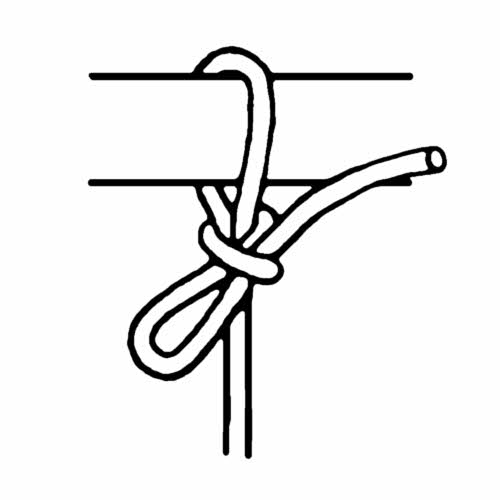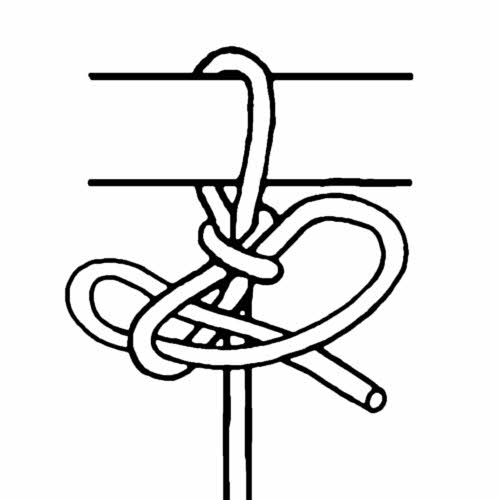Tricky confusing cordage friends.

I'm not into knots. They confuse me. I can't remember how to tie them. I think that a part of my mind never switched on, the part that handles topology. (Hey – it's even hard to pronounce.)
But they are essential, knots. Truly. As in holding up your hammock, if you use a hammock, which I've been doing for over ten years now. There are lots of advantages and disadvantages to hammocks as shelters, but the overwhelming plus, for me, is that I can sleep in one without pain. I can't do that while sleeping on the ground, any more, so that argument is over for me.
But how do you keep the damn thing up all night, and then (almost more important), how do you get the hammock down again the next morning?
It's easy to tie a knot that will hold, but not so easy to tie one that is a snap to undo, which is why there is a whole minor industry around machining bits of hardware that obviate the need to tie much of anything resembling a knot, where hammocks are concerned.
I've never invested in any of this, but haven't ever been happy with my usual attempts at knots either. Until recently.
I think I've got it now, and it's too simple to believe.
First, a knot I can tie.
Second, a knot that I don't forget how to tie from one day to the next.
Third, a knot that is trivially easy to tie.
Fourth, a knot that always holds, and...
Fifth, a knot that comes undone with one pull.
Too good to be true? Yep. Except that it is true.
It's called just the slip knot, or maybe a slippery half hitch, and possibly some other names.
The trick is to use two of them, and pull them both tight. The first one holds the load and the second one locks the first one. Simple. It takes about ten seconds to tie both knots, and about two seconds (or less) to yank them both out again. And in between, they hold.

Now I use this knot not only to suspend my hammock but in guying out the rain fly, hanging my food bag, and for basically any other situation requiring a knot that has to hold, has to release easily, and might have to be re-done during the night in order to take up any slack that develops.
You could even tie this knot with your eyes closed, by touch alone.
Unfortunately, I'm not good enough with any software to create a decent illustration of this knot, but what I've got here probably gets the point across. The only key part isn't tying the knot but adding the second knot to lock the first one.
So far it works.
More:
Good photo at The Ultimate Hang.
Good tying animation at Animated Knots By Grog.
Topology n. (1) The study of the properties of geometric figures or solids that are not changed by homeomorphisms, such as stretching or bending. Donuts and picture frames are topologically equivalent, for example. (2) A collection C of subsets of a set X such that the empty set and X are both members of C and C is closed under arbitrary unions and finite intersections. (3) In topology, knot theory is the study of mathematical knots. While inspired by knots which appear in daily life in shoelaces and rope, a mathematician's knot differs in that the ends are joined together so that it cannot be undone. In mathematical language, a knot is an embedding of a circle in 3-dimensional Euclidean space, R3 (Note that since we're using topology the concept of circle isn't bound only to the classical geometric concept, but to all of its homeomorphisms). <= See? Confoozling, right?